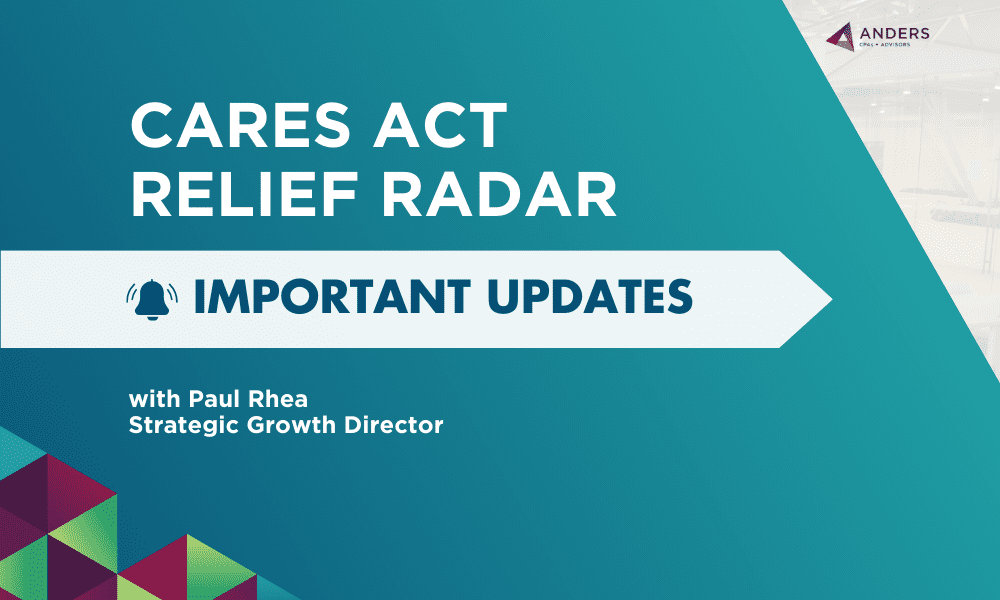The Employee Retention Tax Credit (ERTC) has been a valuable COVID-19 relief option for businesses who faced revenue losses due to ongoing impacts of the pandemic. While some industries were impacted more than others, certain sectors of the construction industry actually expanded in 2020, including homebuilders and industrial contractors. Even if your company performed well overall last year, there could still be an opportunity to claim the ERTC.
Who Qualifies for the ERTC?
Originally part of the Coronavirus Aid, Relief, and Economic Security (CARES) Act, the ERTC allows businesses to take a credit against payroll taxes in order to help offset some of the business losses due to COVID-19. The original ERTC was only available for businesses who were forced to shut down or whose gross receipts in 2020 were 50% less than the same quarter in 2019. The ERTC has since been expanded, modifying the reduction in revenue by an additional 30%. For 2021, businesses are eligible if gross receipts are less than 80% of the gross receipts for same quarter in the prior year.
Businesses that averaged no more than 100 full-time employees in 2019 qualify for the ERTC in 2020 on wages paid to all employees. For the ERTC in 2021, this employee threshold increases to no more than 500 full-time 2019 employees. Full-time employees are those that work at least 30 hours per week. Union employees are included in the employee count for the credit, but those working part-time (less than 30 hours/week) are not.
How Much Can Businesses Qualify for?
For 2020, eligible employers can take a credit of 50% on qualified wages up to $10,000 paid to employees between March 12, 2020 and January 1, 2021. In 2021, the tax credit is increased to 70% of qualified wages, which are limited to $10,000 per employee per quarter. With the 70%, the maximum ERTC amount available is $7,000 per employee per quarter*, for a potential total of $28,000 per employee in 2021. We have seen clients qualify for anywhere from $5,000 to $2.5 million through the ERTC.
*The signing of the Infrastructure Investment and Jobs Act on November 15, 2021, retroactively ended the ERTC as of September 30, 2021, for all employers other than recovery startup businesses.
How Could My Company Qualify for the ERTC After a Good Revenue Year?
Unlike other industries, construction revenue typically isn’t cyclical, and contractors can have revenue fluctuations that vary from month to month or quarter to quarter depending on projects. To qualify for the ERTC, the business only needs to have a quarter-by-quarter drop in revenue of 50% when comparing a 2020 quarter to 2019, and 20% when comparing a quarter in 2021 to 2019. You can also look back a quarter for the ERTC, so if your company was down 20% in Q4 of 2020 compared to 2019, you would qualify for Q1 of 2021.
ERTC Case Study
In one unique scenario, a taxpayer with a 40% increase in revenue in 2020 vs 2019 overall assumed they would not qualify for the ERTC. When taking a closer look, we discovered their revenue dropped 50% in Q4 of 2020 compared to 2019, making them eligible for the ERTC in Q4 of 2020 and Q1 of 2021. Projected total benefit for this taxpayer exceeds $200,000.
How Can I Take Advantage of the ERTC?
Initially, the CARES Act prohibited employers who had received a PPP loan from also utilizing the ERTC. New laws allow an employer to claim the credit for any wages paid beyond the proceeds of the PPP loan that have been forgiven. Taking advantage of both PPP loan funding and the ERTC is a great way to maximize COVID-19 relief opportunities.
If you discover you qualified for the ERTC in 2020, you can amend your quarterly payroll returns to claim the credit. If you identify that you qualify in advance, you can reduce payroll deposits for 2021 to take advantage of the credit.
Find out if your business is eligible for the Employee Retention Tax Credit in 2021.
Due to the IRS ERTC moratorium, Anders will no longer be accepting new ERTC clients until the IRS issues additional guidance related to this moratorium and the options available to affected businesses. Learn more about the IRS’s ERTC moratorium.





